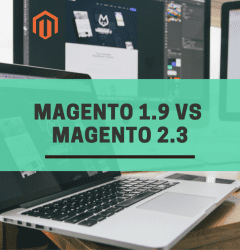This website uses cookies so that we can provide you with the best user experience possible. Cookie information is stored in your browser and performs functions such as recognising you when you return to our website and helping our team to understand which sections of the website you find most interesting and useful.
28 Apr

In an attempt to bolster its stake in e-commerce, Google is making it free for all merchants to sell items in its Shopping tab. Free listings will be rolled out in the US this week and expanded globally before the end of the year. While Google has been showing free listings in the popular products category so far, unpaid listings in the Shopping tab is like an icing on the cake for e-commerce companies. In this article, we’ve compiled a guide for retailers to help them understand major changes and the steps they need to take.
What does the update mean for retailers?
This news presents a huge opportunity to reach more consumers for free. Shopping listings support physical retail stores as well as online e-commerce. And so, given the challenges we face today, these organic shopping listings will hopefully benefit many retail businesses and make their products more visible as an increasing number of people browse online.
- Opportunity for existing and new users: Existing merchants will now be able to list their full inventories as opposed to promoting only some products through paid ads on the platform. New merchants can now apply to place listings for free through Google’s Merchant Center.
- Partnership with PayPal and other Ecommerce platforms: As part of the effort, Google is partnering with PayPal to help bring more merchants onto the platform faster by letting them link their existing accounts for accepting online payments. Google is also working with e-commerce companies such as Shopify to ensure businesses that operate mostly through their websites can quickly shift to selling on Google Shopping.
- Inclusion of paid ads: Paid shopping ads will still appear at the top just like they do on the search results page. The product listing carousel that appears on the main page will still have paid ads. A pro tip here would be to promote higher priority products, which convert well and generate high ROI, through paid listings. Meanwhile, new items or perhaps lower value products could be tested first in the free listings. Additionally, this approach can help you test messaging across the Shopping listings to determine which performs best and how to maximize your visibility.
How can you optimize your free listings for better conversions?
While this move brings some much-needed relief to the retail and small business ecosystem, it also promotes stiff competition. Google will still surface listings from merchants that submit clean, relevant, and frequently updated information. To get ahead of the game, you need to ensure that your product feed is well-optimized. Following are key points to remember while optimizing your listing:
- Title and Description – Avoid keyword stuffing while creating titles and product descriptions. For titles, pick a target keyword and get it as close to the front of your product title as possible. For description, target secondary keywords that didn’t make the cut for the product title. Online shoppers tend to search long-tail queries when they are getting ready to buy.
- Image – Product images are less about communicating relevance to Google and more about attracting consumers’ eyes. Think of it like making a first impression. Keep it professional and avoid any watermarks, logos or additional text.
- Price – Make sure to compare competitor prices for similar products and price yours accordingly. Since there will be no way to bid on the incremental traffic you would get from these free organic listings, it will be even more important to have a strategic approach with pricing.
- Category – Your product category is strictly a backend attribute that Google takes into consideration when populating the Shopping search results. The more targeted you are with your subcategories, the more relevant your product will be. For instance, if you sell baby socks, instead of categorizing it as Apparel & Accessories > Clothing, categorize them as Apparel & Accessories > Clothing > Baby & Toddler Clothing > Baby & Toddler Socks & Tights
- Miscellaneous information – By including the brand, color, size, style, model, gender, measurements, and any other relevant attributes, you give yourself a better shot of capturing buyer intent.
While measurement is not available yet, eventually, marketing teams will have to monitor shopping campaign performance and track if organic product listings boost overall sales or simply replace revenue that was being driven by paid shopping ads. Retailers who don’t yet have a product feed set up through the merchant center will need to mobilize quickly to take advantage of high intent traffic. In the face of COVID-19, as consumers move online, retailers must embrace all online sales channels, including the latest option, opened up by Google.













